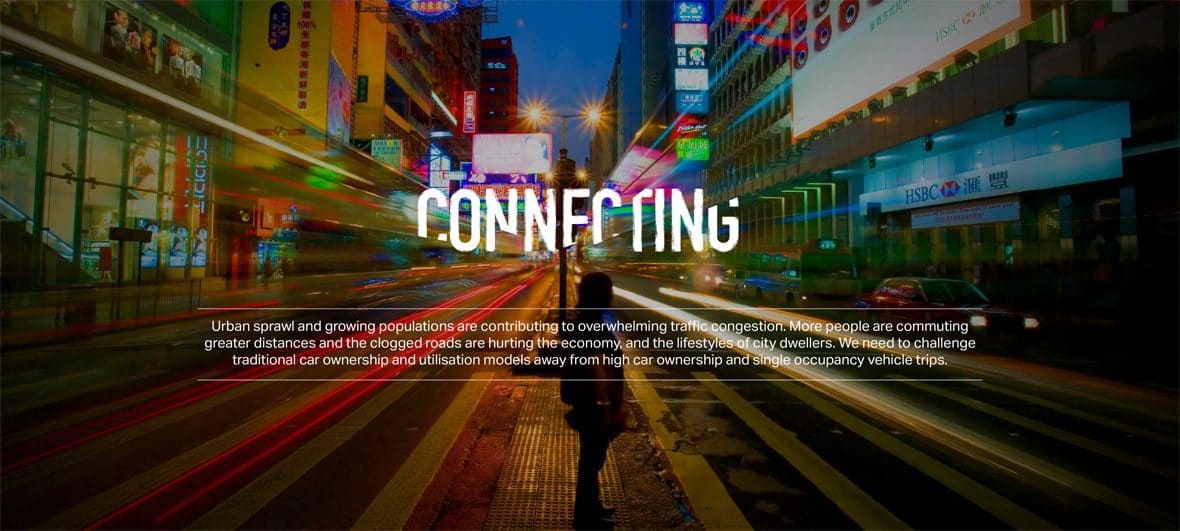
Transport on Demand: Accelerating Australian cities
Key steps for accelerating mobility
The way we approach transport in Australian cities is changing, but are we moving fast enough to mitigate the costs of congestion caused by the continued rapid growth in our cities?
The populations of our major cities will grow significantly over the next 15 years. By 2031, without new infrastructure and services, congestion is forecast to cost our economy more than $50 billion a year. Australia’s metropolitan road networks and public transport networks are struggling to cope with this growing population, and while major infrastructure projects and new planned mass transit services will support continued urban growth, these are costly solutions to an efficiency problem.
 |
Congestion is forecast to cost more than $50 billion by 2031. What are cities doing to mitigate this cost? |
What is certain is that we need to refocus our cities away from high car ownership and high numbers of single occupancy vehicle trips, especially in peak hours. One way to do this is by challenging traditional car ownership and utilisation models and to move our cities beyond ‘peak car’ – the point at which the number of privately owned cars and single occupancy vehicle trips on our roads stops increasing and starts to decline. By reprioritising our networks towards more efficient use of resources, we not only reduce congestion we can ensure our cities are for our people, by promoting healthy and vibrant communities.
At the current rate of private car ownership and single occupancy car use, peak car is not yet in sight. This makes it critical that we find additional solutions to speed up our attempts to encourage more people to leave their private vehicles at home, if only during the busiest times of the day.

A relatively new, emerging transport model, carshare, has the potential to contribute significantly to helping manage congestion and change the way we think about car ownership in Australian cities. Carshare is an example of a suite of transport services deemed ‘transport on-demand’ or ‘Mobility as a Service’, these services are designed to be readily available to the user, through modern technology and mobile phone applications providing services on request at a given time and proximate to the users location. The role of on-demand services helps fill the mobility gap between scheduled mass public transport services, such as trains and buses, and provides an alternative to private vehicle use or walking and cycling.

AECOM has used usage data from GoGet – the largest carshare company in Australia – to estimate how big the carshare market could be in Sydney. Our conservative estimates are that there could be 3,500 car share vehicles in Sydney by 2036 and as many as 9,000 if the public are encouraged to embrace carsharing and city leaders provide the necessary support.
On current projections, however, we won’t see these outcomes for another 20 years. This is why we need to accelerate shared mobility.
We don’t need to imagine peak car, because we already see glimpses of it. Four times a year during the school holiday period, commuters suddenly find that driving to the train station or to the office is faster.
If people are the lifeblood of our communities, efficient transport is the circulatory system that allows them to connect with work, entertainment, friends and sport.
The good news is that the initial infrastructure we need to make this happen – our roads – is already in place. We just need to change the way we use it. This change is already beginning as car owners take more trips using carsharing- and ridesharing services, removing cars from the road.
To see noticeable change, shared mobility must become part of our transport network. Governments and developers can accelerate this by partnering to promote the benefits of carsharing- and ridesharing, providing space for shared vehicles and connected trip planning.
For all the steps needed to accelerate Australian cities read the report now.
Authors
James Rosenwax, Market Sector Director- Cities
[1] Australian Infrastructure Audit, Our Infrastructure Challenges, Executive Summary, April 2015 http://infrastructureaustralia.gov.au/policy-publications/publications/files/Australian-Infrastructure-Audit-Executive-Summary.pdf



